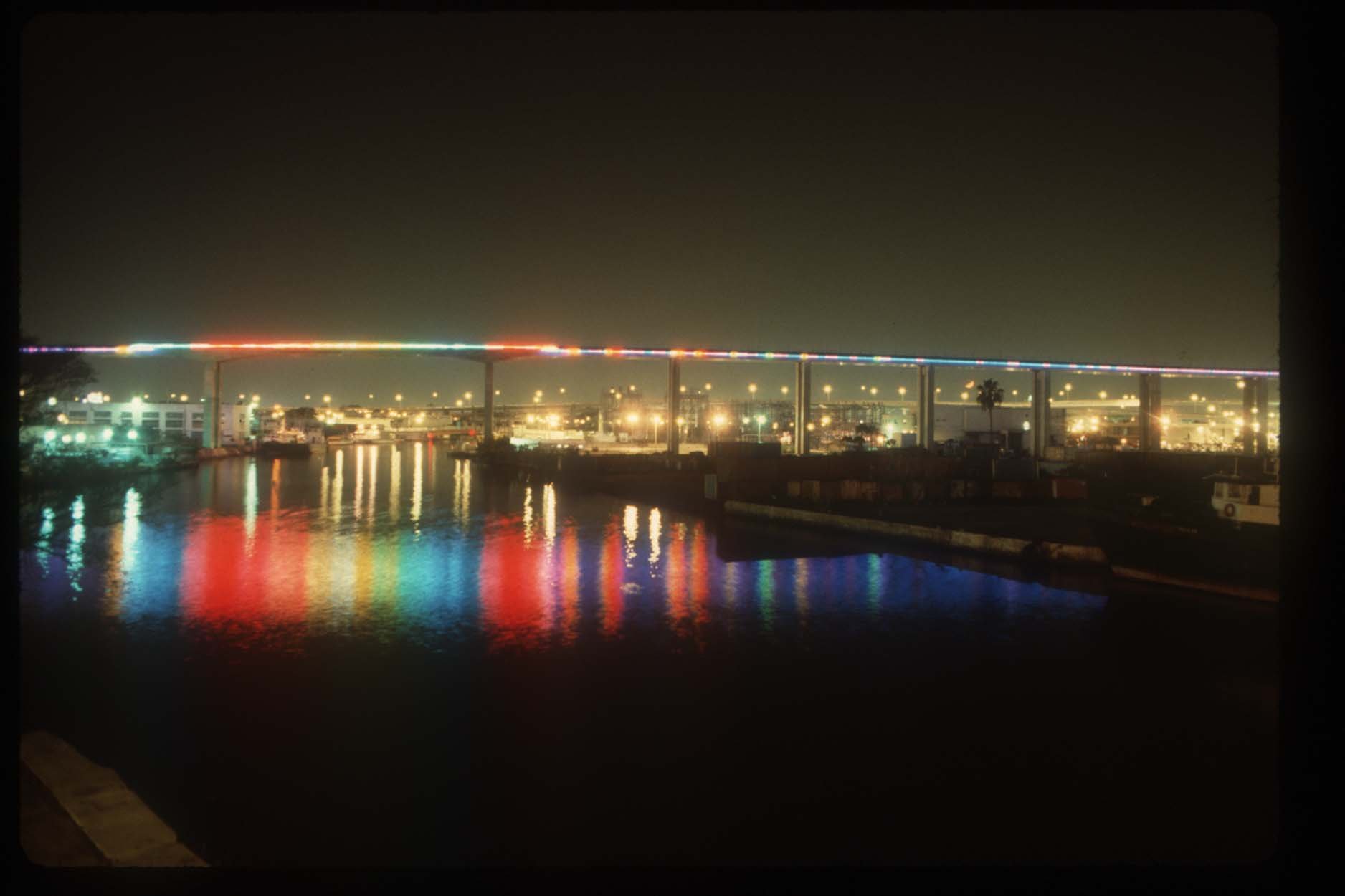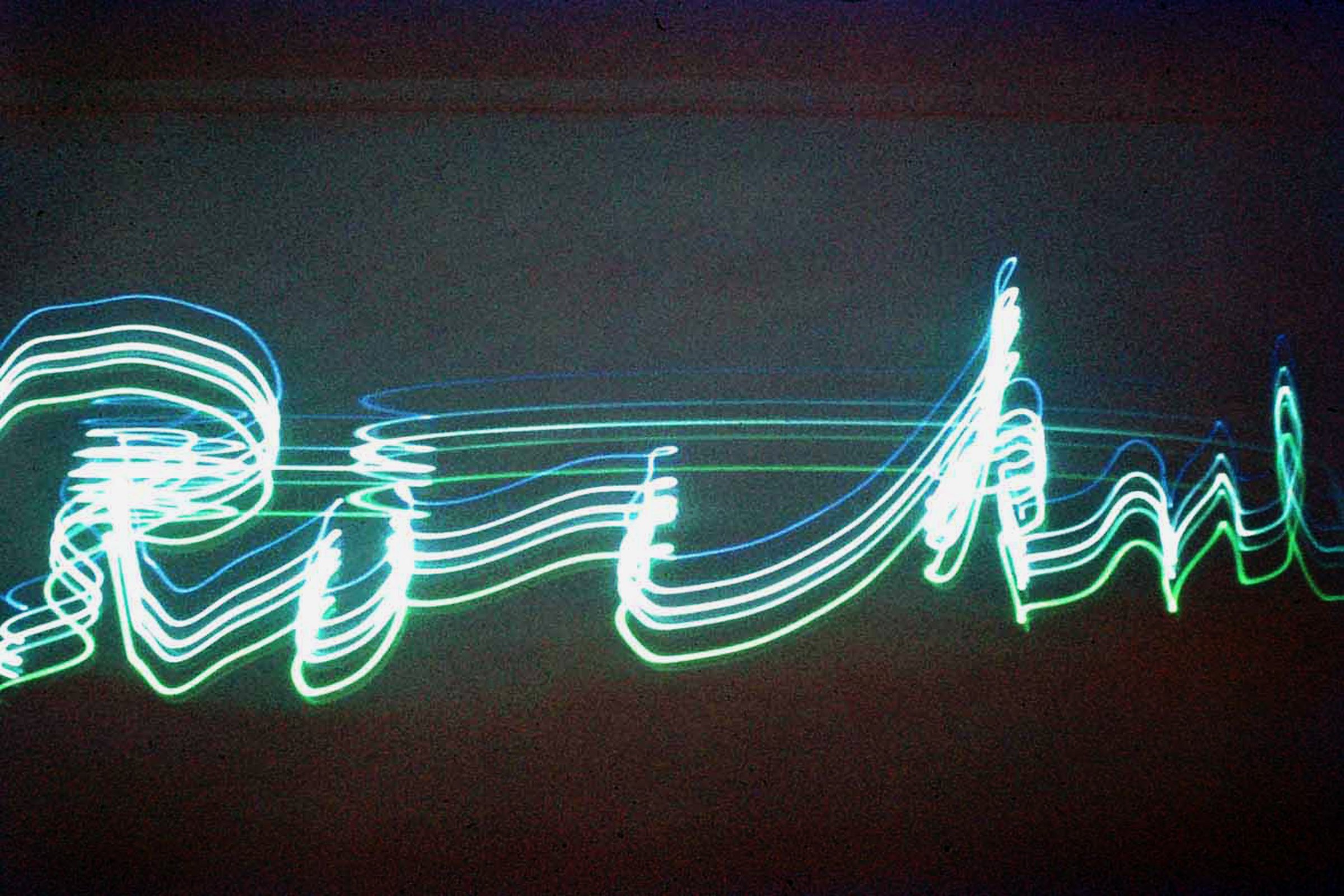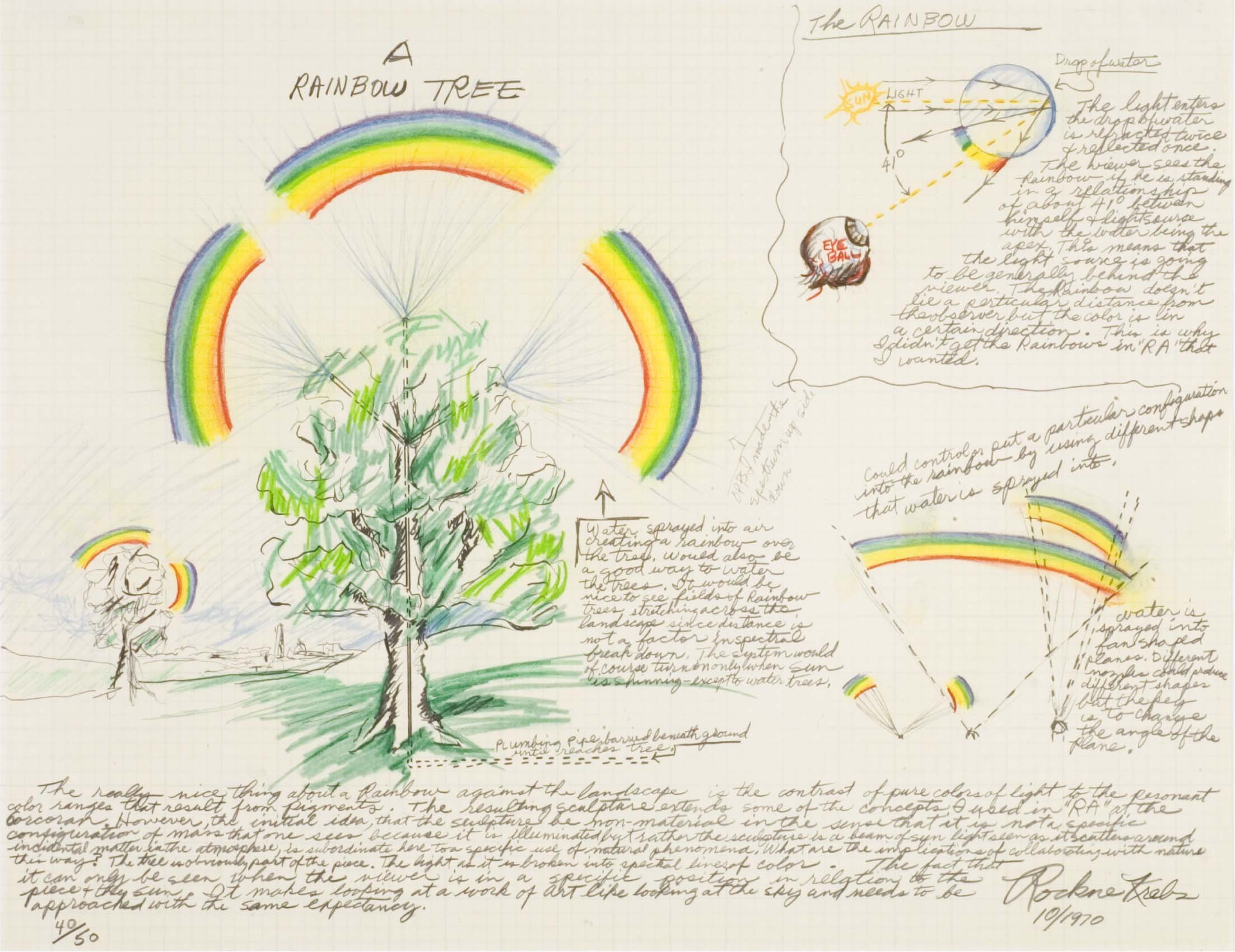Sculpture Minus Object, 1968, the first ever 3D laser beam installation. Gallery of Modern Art, Washington, DC.
"My first exhibit was at the Washington Gallery of Modern Art in 1968. [curated by Walter Hopps and Renato Danese] The room was 25’ x 21’ x 11’ high. I mention the size of the enclosure because to me I’m trying to deal with the six planes, the enclosures through which our bodies move, and use light as a medium in that I am projecting the light through this space...
What really prompted me to try this was the possibility of reversing the proposition by which we normally view sculpture.
We normally have some kind of mass or configuration, which when it is illuminated, we can perceive this is obviously some kind of an object regardless of its medium.
What I did I think was to reverse this proposition. I introduced incidental matter into the atmosphere and project light through it. The resulting configuration would be the work of art itself." Rockne Krebs, 1970
The Sixth National Sculpture Conference, 1970, catalogue, National Sculpture Center, The University of Kansas, Lawrence, KS. Edited by Elden C. Tefft, published 1971. Published transcript of Krebs’ lecture.
The Green Hypotenuse, 1983, 7-mile-long laser beam from Mt. Wilson to Caltech, Pasadena, CA.
Rockne Krebs b: Kansas City, MO, 1938 d: Washington, DC, 2011
The pioneering art and technology artist
Rockne Krebs died in 2011 in Washington, DC, where he had lived most of his life since the early 1960s, and in the Northern Neck, Virginia. Krebs was widely recognized for his monumental sculptural installations with laser light, a new technology when he began to explore its potential for art in the 1960s.
Krebs created the vast majority of his laser works for specific outdoor locations. Some of his most important installations were on the National Mall in Washington, DC, at the Kennedy Space Center, the Philadelphia Museum of Art, the Walker Art Center in Minneapolis, and a line of laser light from Mt. Wilson in California (where the universe was discovered at the observatory in the 1920s) to the campus of the California Institute of Technology.
Krebs also worked in a variety of media, including neon (in installations on large bridges in Miami, Florida and Shreveport, Louisiana), sunlight, and camera obscura. A solar piece using glass prisms in the Omni International building in downtown Atlanta was calibrated to the changing angle of the sun so that on the equinoxes an eye (based on that of his daughter Heather) appeared on the wall of the building's atrium. The artist also created a number of sculptures that combined prisms. One of his camera obscura installations inspired an exhibition of light, film and video environments at the Walker Art Center organized by then Director Martin Friedman. Krebs also created major public works for the Miami International Airport and for the General Services Administration in Topeka, Kansas.
One of Krebs' early innovative installations was created for the Corcoran Gallery of Art in Washington, DC, including a laser and sunlight piece, "Ra,” in which a fog machine made the laser light more visible. In addition to a National Endowment for the Arts Fellowship in 1970, he received a Guggenheim Foundation Fellowship in 1972 to focus on drawing, and this medium became an important creative exploration for him for the rest of
his life, including his last years. A retrospective of his drawings was shown at Caltech, the Cincinnati Contemporary Art Center, and at the Corcoran Gallery of Art in the 1980s. During the 1960s and 1970s Krebs showed his work at the respected Jefferson Place Gallery in Washington, DC.
Krebs became deeply involved in artist's issues in Washington, working with an organization that approached important museums in the city to encourage them to show more work by artists in the area. He was one of the founding board members of the Washington Project on the Arts, which was founded to provide more exhibition space for area artists.
Krebs' initial approach to sculpture was to eliminate its materiality, and a number of his early 1960s works were geometric forms in clear Plexiglas. Laser light was his next step in creating sculptural works that had no solid form. His ground-breaking works in this medium led to his inclusion in the famous Art and Technology Project and subsequent exhibition at the Los Angeles County Museum of Art. In this research period he worked with the engineers at Hewlett Packard.
In 1974 he was the first artist to create a work with digital memory that could project words or moving images in laser light. His interest in technology and science led to a lifelong friendship with Philip M. Smith, Science Advisor to President Carter and, later, Director of the National Academy of Sciences.
Krebs was born in Kansas City, Missouri, and received his B.F.A. in Sculpture from the University of Kansas. Philip M. Smith recently made a gift of a number of the artists' finest drawings and sculptures to the Spencer Museum of Art. Krebs is also represented in the collections of other important art institutions.
Jay Belloli, October 2011
Obituary: Rockne Krebs (unpublished)
A book on his art and its key role in the rise of art and technology was in the process of being written by Jay Belloli (b: 1945 - d: 2021), a curator who worked with the artist on a number of laser installations and exhibitions.

The Miami Line, urban-scale neon sculpture, one-quarter mile long neon on both sides of the bridge over the Miami River in downtown Miami, FL, 1987. “With its hot color, cool geometry and dramatic site, Miami Line seems to have provided not only an emblem for the city but a focus for civic pride.” David Joselit, Art in America, 1990, Public Art & the Public Purse, Miami River in downtown Miami, FL, 1987

Anonymous, the first ever laser scanning device with digital memory, 1974. Projected Images, Walker Art Center, Minneapolis, MN.

Pi Flower, 1968. Collection of the Modern Art Museum of Fort Worth.Photograph: Corcoran Gallery of Art, Washington, DC, Gilliam, Krebs, McGowin, exhibition curated by Walter Hopps, 1969.

A Rainbow Tree, hand-colored lithograph, 1970. “Prints from the permanent collection of Minneapolis’ Walker Art Center, currently on display at the UI Museum of Art, represent a cross-section of art schools of the late ‘60s and early '70s… Rockne Krebs’ A Rainbow Tree is a conceptual statement, including sketches and text, for an ecological sculptural piece of rainbow haloes for trees, which are marvelous to imagine.” Gary Reynolds, Daily Iowan, 1980.

Green Air – an environmental collage, 1978, Fort Worth Art Museum, Fort Worth, TX.



